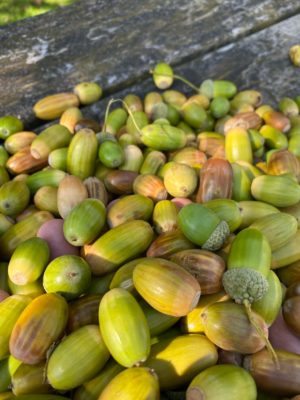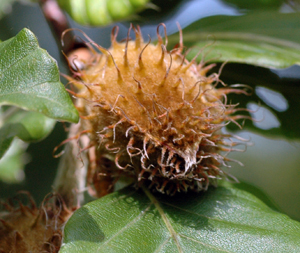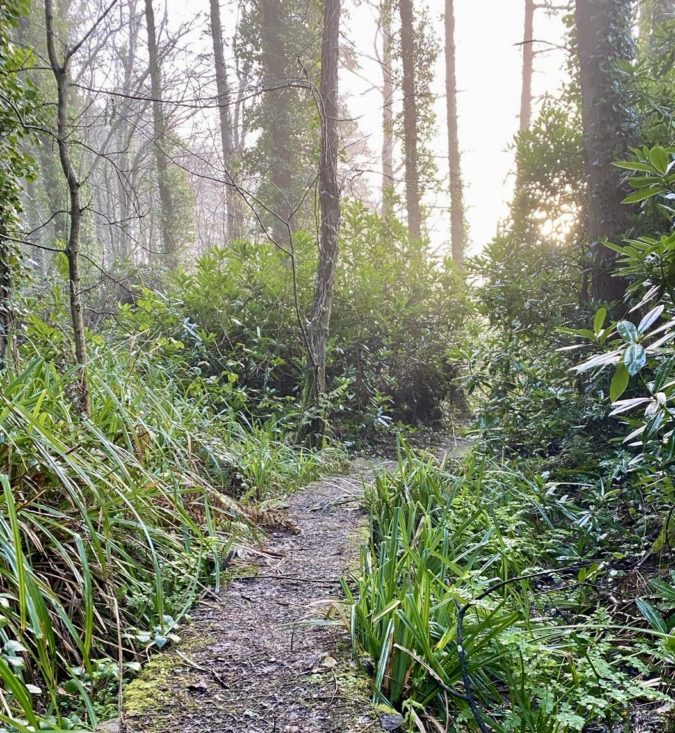A model of Masting.

Every now and then, some trees produce massive numbers of their fruits and seeds. This sudden ‘excess’ of seeds / fruits, mens that the various animals that feed on the fruits / seeds cannot eat all of them - so many will survive to germinate, and go on to develop into seedlings and saplings.
This excess of fruits [such as acorns, beech nuts] is known as masting. Whilst it is thought to help with the long term survival of tree species, it is not without certain risks. Masting uses up considerable nutritional and energy resources to produce flowers and fruit, which can affect the long term viability of the tree and the growth / reproductive capacity in subsequent years. It is also possible that the abundance of food for animals could lead to an increase in small mammals (rodents?) and other animals, some of which might be vectors for disease.
Masting has seemed to be a random process. However, researchers at Hokkaido University have now developed a computer based model of masting - by studying the Japanese Oak (Quercus crispula). The model considers such factors as :
- the resource budget of the tree
- pollen limitation
- weather patterns
 The researchers hope that apart from predicting the likelihood of masting that the model will also help predict :
The researchers hope that apart from predicting the likelihood of masting that the model will also help predict :
- ‘the effects of climate change on woodlands and forests’
- ‘long term trend availability of food for animals’.
Though the model is currently based on the Japanese Oak, it is hoped to extend the model to include other species through collaboration with workers across the globe.

Woodland path covered with mast
Comments are closed for this post.
Discussion
fungi, effects on masting and viability of local native tree-species ???
I had an old Walnut tree at the bottom of my garden in Belgium some 20 years ago. One autumn it produced a huge number of nuts that dropped to the ground around.
The following year it died. It seemed to me that the tree produced its last harvest as if it knew it was dying, and was attempting to ensure the survival of its successors!

If humans were sensible they would pick up the acorns and plant them along the hedgerows and fields to ameliorate climate change, improve the quality of the air
and enhance nature and wildlife. After all if you’re starving pigeons etc are a source of food. Anyway …… moving swiftly on
Helen Williams
26 March, 2024